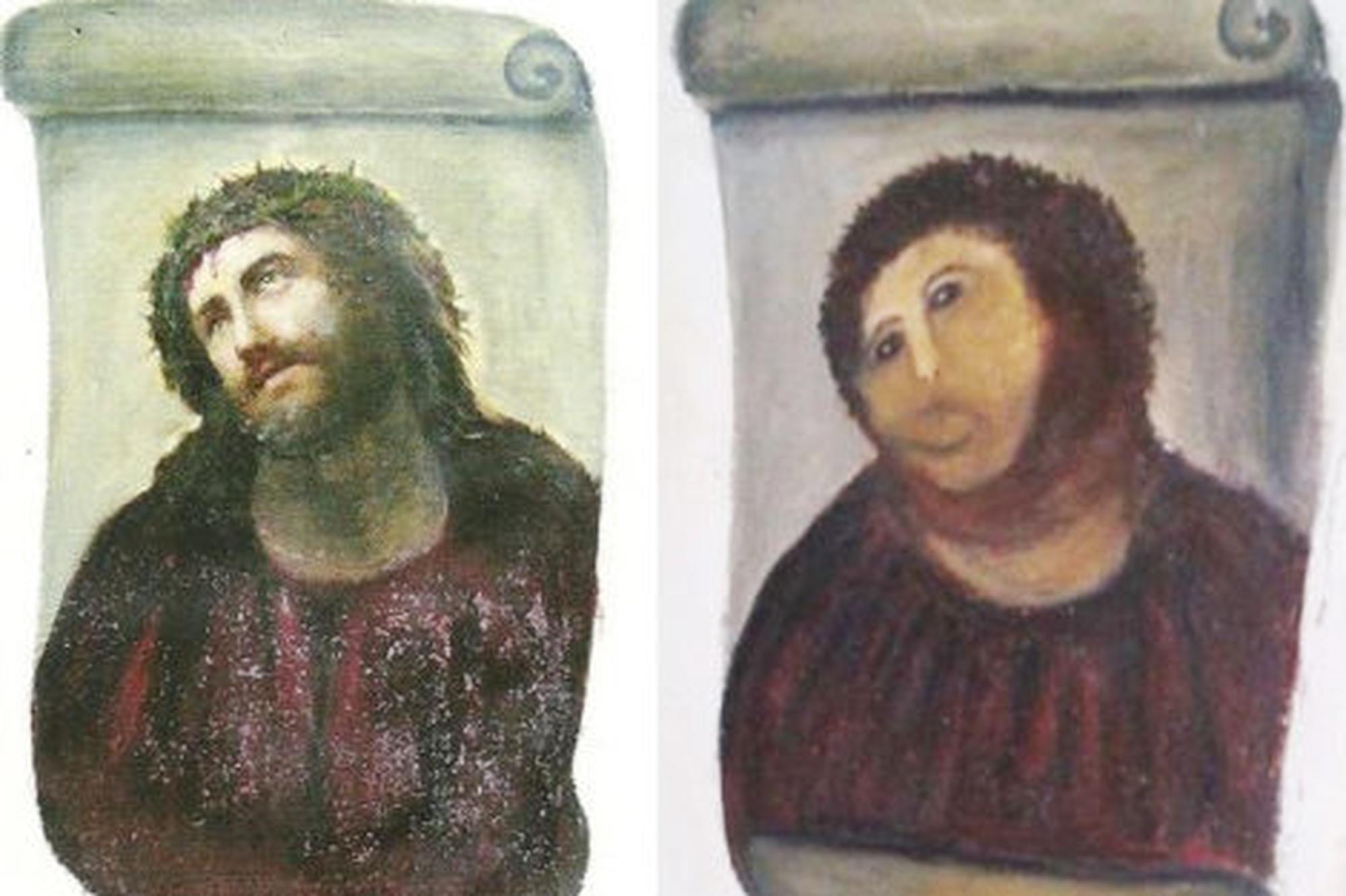
It was, by all accounts, an unremarkable painting by an unremarkable painter tucked away in the church of an unremarkable Spanish town—Santuario de Misericordia in Borja, Zaragoza, to be precise.
The problem was, Elías García Martínez’s Ecce Homo was only 80 years old and had already begun to fade. Jesus’s crown looked less thorny, his face had lost its sheen, and his crimson tunic was slowly flaking off.
This distressed Cecilia Giménez, an 80-year-old parishioner who, as luck would have it, was also an amateur artist. So, with the priest’s blessing, Giménez got to work, layering heavy blocks of color onto the fresco.
Giménez intended to apply finesse to the Savior’s face, but was called away from town before she could finish the job. In the interim, the town’s cultural association uncovered her handiwork. Horrified, it posted before-and-after photographs of the painting to its blog under the headline “An Unspeakable Fact.”
The images of the botched, bulbous Jesus went viral. Within days, they had spread from Reddit to 4Chan to Facebook and Twitter, and finally hit mainstream media.
Potato Jesus photoshopped into Edvard Munch’s The Scream. Photo: knowyourmeme.
Ecce Homo ascended into meme-dom. Known as potato Jesus or monkey Christ, the meme became shorthand for good thing turned bad (as well as generally celebrating irreverence). It also spawned a whole grouping of memes in which Christ’s mangled simian features were photoshopped into famous paintings, including Edvard Munch’s The Scream and Leonardo Da Vinci’s Mona Lisa.
Initially, the situation appeared dire for Giménez. The world’s media had descended, the town was furious, and the artist’s family was threatening legal action. The Lord, however, works in mysterious ways. Instead of being vilified, Giménez became a hero.
The turn began with the arrival of tourists. Since in 2012, hundreds of thousands have made the pilgrimage to northeastern town, previously known for little more than wine and its 16th-century town hall. The church entrance fee together with merchandise featuring Giménez’s Jesus (teddy bears, mousepads, t-shirts etc.) has brought welcome revenue to Borja.
Following an agreement with the local council in 2013, Giménez has received 49 percent of the profits from all merchandise featuring her restoration. She donates much of the proceedings to Muscular atrophy charities.
Giménez’s late career as an artist has continued with a couple of local shows and an online auction that saw a work sell for $1,400. Her celebrity has also endured. She has appeared in a music video and in 2023, Monkey Christ, a comic opera that tells the tale (with some poetic license) opened in Las Vegas.
As the opera librettist, Andrew Flack put it, Giménez’s story is a reminder of the life’s beautiful unpredictability, “Your disaster could be my miracle.”
What’s in a meme? Sometimes, art. Art Behind the Meme brings you the low-down on the artworks that have achieved our era’s finest and rarest feat: virality. Read on for how these art-historical works have been reimagined for the age of social media.